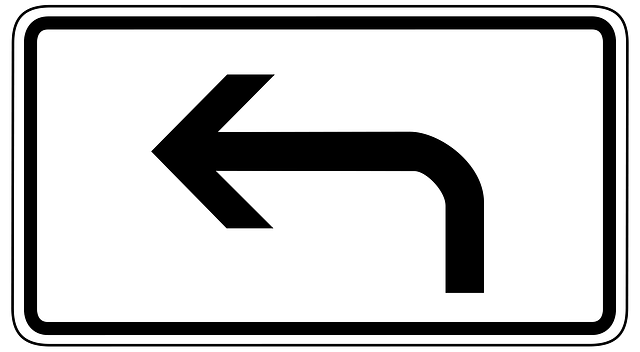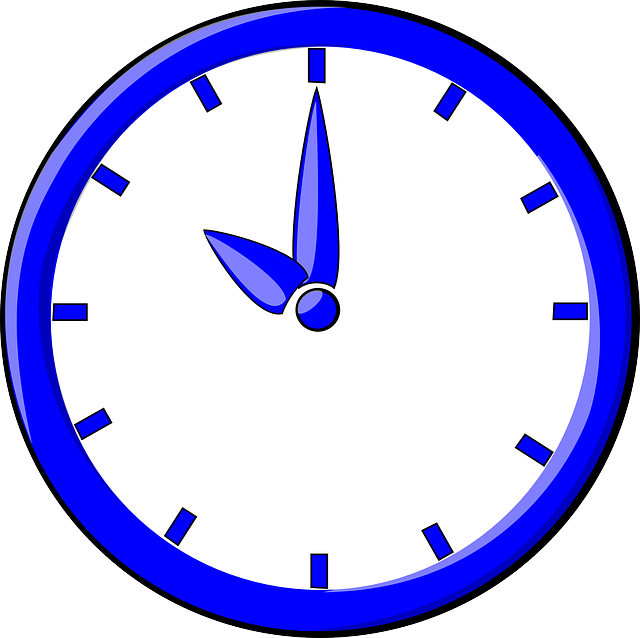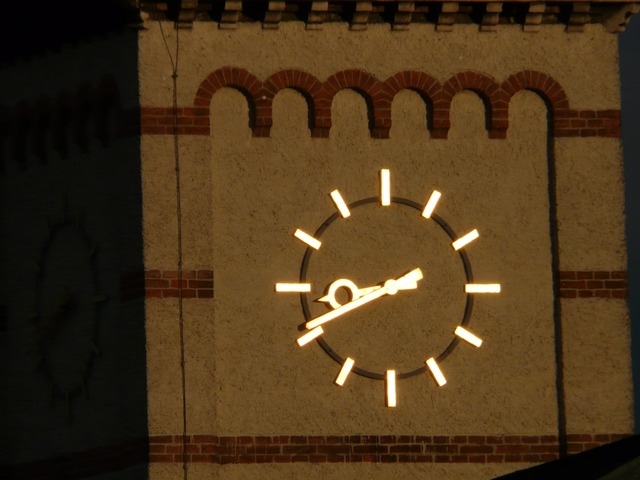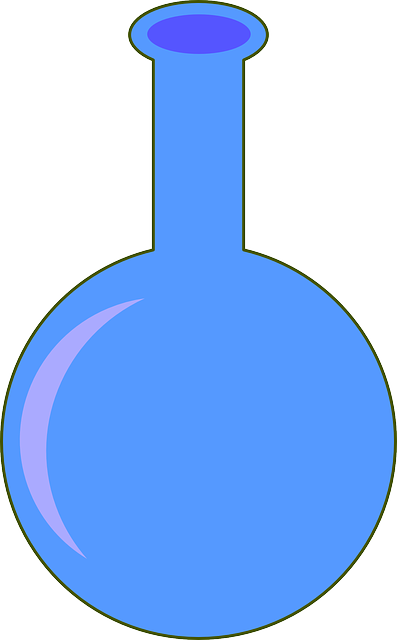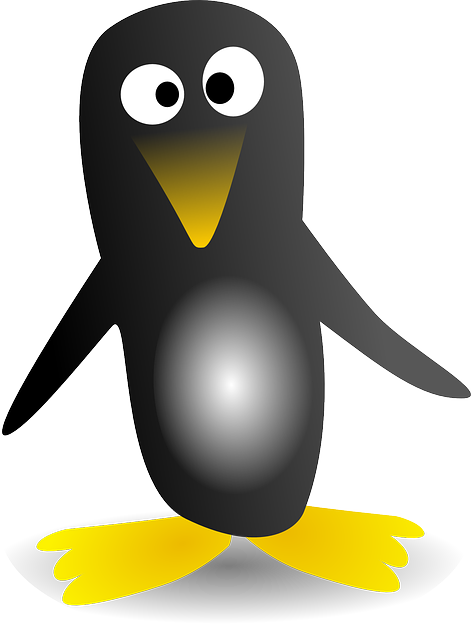نقطة لاگرانجية
النقاط اللاگرانجية (بالإنگليزية: Lagrangian points؛ ![]() //؛ وأيضاً نقاط لاگرانج Lagrange points، النقاط-ل L-points، أونقاط الميسان libration) هي خمس مواقع في نسق مداري حيث لا يؤثر على غرض صغير سوى الجاذبية ويمكن نظرياً حتىقد يكون جزءاً من نمط ثابت الشكل مع جرمين أكبر (مثل ساتل مع الأرض والقمر). وتميز نقاط لاگرانج المواقع التي يعطي الشد المجمـّع للجاذبية من كتلتين كبيرتين بالضبط قوة الجذب المركزية المطلوبة لكي يدور معهما.
//؛ وأيضاً نقاط لاگرانج Lagrange points، النقاط-ل L-points، أونقاط الميسان libration) هي خمس مواقع في نسق مداري حيث لا يؤثر على غرض صغير سوى الجاذبية ويمكن نظرياً حتىقد يكون جزءاً من نمط ثابت الشكل مع جرمين أكبر (مثل ساتل مع الأرض والقمر). وتميز نقاط لاگرانج المواقع التي يعطي الشد المجمـّع للجاذبية من كتلتين كبيرتين بالضبط قوة الجذب المركزية المطلوبة لكي يدور معهما.
النقاط اللاگرانجية هي حلول أنماط ثابتة لمشكلة الأجرام الثلاثة المحدودة. عملى سبيل المثال، إذا كان هناك جرمين هائلين في مدارين حول مركز كتلتيهما، فإن هناك خمس مواضع في الفراغ حيث يمكن وضع جرَم ثالث، بكتلة ضئيلة لدرجة يمكن تجاهلها نسبياً، وفي تلك النقاط يحتفظ الجرم الثالث بمسقطه بالنسبة للجرمين الكبيرين. وكما يـُرى في إطار مرجعي دوراني يناظر السرعة الزاويّة لجرمين يدوران حول نفس المركز، فإن المجالين الثنطقيين للجرمين الهائلين، مجتمعين مع تسارع الساتل، هم في اتزان فقط في "نقاط لاگرانج"، مما يتيح لجرم ثالث حتىقد يكون ثابتاً نسبياً بالنسبة للجرمين الكبيرين.
تاريخ ومفاهيم
نقاط لاگرانج الثلاثة الواقعين على خط مستقيم (L1, L2, L3) اكتشفهم ليونارد اويلر قبل بضع سنوات من اكتشاف لاگرانج للنقطتين الأخيرتين.
في 1772، كان عالم الرياضيات الإيطالي-الفرنسي جوزيف لوي لاگرانج يعمل على معضلة الأجرام الثلاثة الشهيرة عندما اكتشف شذوذ مثير للاهتمام في النتائج. ففي الأصل، كان هدفه اكتشاف طريقة ليحسب بسهولة التفاعل التثاقلي بين عدد عشوائي من الأجرام في نظام، لأن الميكانيكا النيوتنية تستنتج حتى مثل هذا النظام ينتج عنه حتى تدور الأجرام بشكل فوضوي حتى يحدث اصطدام، أوحتى جرماً به خارج النظام حتى يمكن تحقيق اتزان.
The logic behind this conclusion is that a system with one body is trivial, as it is merely static relative to itself; a system with two bodies is the relatively simple two-body problem, with the bodies orbiting around their common center of mass. However, once more than two bodies are introduced, the mathematical calculations become very complicated. It becomes necessary to calculate the gravitational interaction between every pair of objects at every point along their trajectory.
Lagrange, however, wanted to make this simpler. He did so with a simple hypothesis: The trajectory of an object is determined by finding a path that minimizes the action over time. This is found by subtracting the potential energy from the kinetic energy. With this way of thinking, Lagrange re-formulated the classical Newtonian mechanics to give rise to Lagrangian mechanics.
Common opinion has been that Lagrange himself considered how a third body of negligible mass would orbit around two larger bodies which were already in a near-circular orbit, and found that in a frame of reference that rotates with the larger bodies, there are five specific fixed points where the third body experiences zero net force as it follows the circular orbit of its host bodies (planets). However, that is false.
Actually, Lagrange considered in the first chapter of the Essai the general three-body problem. From that, in the second chapter, he demonstrated two special constant-pattern solutions, the collinear and the equilateral, for any three masses, with conic section orbits. Thence, if one mass is made negligible, one immediately gets the five positions now known as the Lagrange Points; but Lagrange himself apparently did not note that.
Early in the 20th century, Trojan asteroids were discovered at the نطقب:L4 and نطقب:L5 Lagrange points of the Sun–Jupiter system.
In the more general case of elliptical orbits, there are no longer stationary points in the same sense: it becomes more of a Lagrangian “area”. The Lagrangian points constructed at each point in time, as in the circular case, form stationary elliptical orbits which are similar to the orbits of the massive bodies. This is due to Newton's second law (Force = Mass times Acceleration, or '"`UNIQ--postMath-00000001-QINU`"'), where p = mv (p the momentum, m the mass, and v the velocity) is invariant if force and position are scaled by the same factor. A body at a Lagrangian point orbits with the same period as the two massive bodies in the circular case, implying that it has the same ratio of gravitational force to radial distance as they do. This fact is independent of the circularity of the orbits, and it implies that the elliptical orbits traced by the Lagrangian points are solutions of the equation of motion of the third body.[]
النقاط اللاگرانجية
The five Lagrangian points are labeled and defined as follows:
ل1
The ل1 point lies on the line defined by the two large masses M1 and M2, and between them. It is the most intuitively understood of the Lagrangian points: the one where the gravitational attraction of M2 partially cancels M1 gravitational attraction.
- Example: An object which orbits the Sun more closely than the Earth would normally have a shorter orbital period than the Earth, but that ignores the effect of the Earth's own gravitational pull. If the object is directly between the Earth and the Sun, then the Earth's gravity weakens the force pulling the object towards the Sun, and therefore increases the orbital period of the object. The closer to Earth the object is, the greater this effect is. At the ل1 point, the orbital period of the object becomes exactly equal to the Earth's orbital period. ل1 is about 1.5 million kilometers from the Earth.
ل2
The ل2 point lies on the line defined by the two large masses, beyond the smaller of the two. Here, the gravitational forces of the two large masses balance the centrifugal effect on a body at ل2.
- Example: On the side of the Earth away from the Sun, the orbital period of an object would normally be greater than that of the Earth. The extra pull of the Earth's gravity decreases the orbital period of the object, and at the ل2 point that orbital period becomes equal to the Earth's.
If the mass of the smaller object (M2) is much smaller than the mass of the larger object (M1) then ل1 and ل2 are at approximately equal distances r from the smaller object, equal to the radius of the Hill sphere, given by:
- '"`UNIQ--postMath-00000002-QINU`"'
where R is the distance between the two bodies.
This distance can be described as being such that the orbital period, corresponding to a circular orbit with this distance as radius around M2 in the absence of M1, is that of M2 around M1, divided by '"`UNIQ--postMath-00000003-QINU`"':
- '"`UNIQ--postMath-00000004-QINU`"'
أمثلة
- Sun and Earth: 1,500,000 kم (4.9×109 قدم) from the Earth
- Earth and Moon: 60,000 kم (200,000,000 قدم) from the Moon
نطقب:L3
The نطقب:L3 point lies on the line defined by the two large masses, beyond the larger of the two.
- Example: نطقب:L3 in the Sun–Earth system exists on the opposite side of the Sun, a little outside the Earth's orbit but slightly closer to the Sun than the Earth is. (This apparent contradiction is because the Sun is also affected by the Earth's gravity, and so orbits around the two bodies' barycenter, which is, however, well inside the body of the Sun.) At the نطقب:L3 point, the combined pull of the Earth and Sun again causes the object to orbit with the same period as the Earth.
نطقب:L4 ونطقب:L5
النقطتان نطقب:L4 ونطقب:L5 يقعان في الركنين الثالثين للمثلثين متساويي الأضلاع في مستوى المدار whose common base is the line between the centers of the two masses, such that the point lies behind (نطقب:L5) or ahead of (نطقب:L4) the smaller mass with regard to its orbit around the larger mass.
الرحلات إلى النقاط اللاگرانجية
The Lagrangian point orbits have unique characteristics that have made them a good choice for performing some kinds of missions. These missions generally orbit the points rather than occupy them directly.
الرحلات السابقة والحالية
| الرحلة | النقطة اللاگرانجية | الوكالة | الوضع |
|---|---|---|---|
| Advanced Composition Explorer (ACE) | Sun–Earth ل1 | NASA | Operational |
| Solar and Heliospheric Observatory (SOHO) | Sun–Earth ل1 | ESA, NASA | Operational |
| WIND | Sun–Earth ل1 | NASA | Operational |
| International Sun–Earth Explorer ثلاثة (ISEE-3) | Sun–Earth ل1 | NASA | Original mission ended, left ل1 point |
| Wilkinson Microwave Anisotropy Probe (WMAP) | Sun–Earth ل2 | NASA | Operational, graveyard orbit |
| Herschel and Planck Space Observatories | Sun–Earth ل2 | ESA | Operational |
| Chang'e 2 | Sun–Earth ل2 | CNSA | Original mission ended, left ل2 point for 4179 Toutatis at April 15, 2012 |
| ARTEMIS mission extension of THEMIS | Earth–Moon ل1 and ل2 | NASA | Operational |
| GRAIL | Sun–Earth ل1 | NASA | Passed ل1, arrived at the Moon |
المهام المستقبلية والمقترحة
| المهمة | النقطة اللاگرانجية | الوكالة | الوضع |
|---|---|---|---|
| Deep Space Climate Observatory | Sun–Earth ل1 | NASA | On hold[] |
| LISA Pathfinder (LPF) | Sun–Earth ل1 | ESA, NASA | Launch Date 2014 |
| Solar-C | Sun–Earth ل1 | Japan Aerospace Exploration Agency | Possible mission after 2010[] |
| Gaia | Sun–Earth ل2 | ESA | Planned for August 2013 |
| James Webb Space Telescope | Sun–Earth ل2 | NASA, ESA, Canadian Space Agency | Working on 2018 launch |
| Euclid | Sun–Earth ل2 | ESA | Proposed for launch in 2019 |
| Wide Field Infrared Survey Telescope | Sun–Earth ل2 | NASA, U.S. Department of Energy | Proposed for launch in 2020 |
| "Lunar Far-Side Communication Satellites" | Earth–Moon ل2 | NASA | Proposed in 1968 |
| Exploration Gateway Platform | Earth–Moon ل2 | NASA | Proposed in 2011 |
| Space colonization and manufacturing | Earth–Moon نطقب:L4 or نطقب:L5 | L5 Society | Proposed in 1974[] |
طالع أيضاً
- Euler's three-body problem
- List of objects at Lagrangian points
- Lunar space elevator
- Home on Lagrange (The L5 Song)
- جمعية ل5
- Horseshoe orbit
- Hill sphere
- Lagrange point colonization
- Lissajous orbit
- Lagrangian mechanics
- Gegenschein
- Co-orbital configuration
ملاحظات
الهامش
- ^ "نقاط لاگرانج" by Enrique Zeleny, مشروع إثباتات ولفرام.
-
^ Koon, W. S. (2006). . p. 9. Unknown parameter
|coauthors=ignored (|author=suggested) (help) (16MB) - ^ Leonhard Euler, De motu rectilineo trium corporum se mutuo attrahentium (1765)
- ^ (بالفرنسية) Lagrange, Joseph-Louis (1867–92). "Tome 6, Chapitre II: Essai sur le problème des trois corps". . Gauthier-Villars. pp. 229–334.
- ^ (بالفرنسية) Lagrange, Joseph-Louis (1867–92). "Tome 6, Chapitre II: Essai sur le problème des trois corps". . Gauthier-Villars. pp. 229–334.
- ^ Cornish, Neil J. "The Lagrangian Points" (PDF). Montana State University - Department of Physics. Retrieved 29 July 2011.
- ^ Zegler, Frank; Bernard Kutter (2010-09-02). "Evolving to a Depot-Based Space Transportation Architecture". AIAA SPACE 2010 Conference & Exposition. AIAA. p. 4. Retrieved 2011-08-30. "We can create an energy savings account by moving propellant to the earth-moon Lagrange points - especially L2. Located 60,000 km beyond the moon, propellant or cargo cached at L2 is very nearly at earth escape energy. It takes only a small nudge to dislodge it from Earth's gravitational grasp. This has been known for decades and L2 is often called a gateway to the solar system."
- ^ "ACE Mission". Caltech ACE Science Center. Retrieved 2010-07-03.
- ^ "SOHO's Orbit: An Uninterrupted View of the Sun". NASA. Retrieved 2010-09-28.
- ^ "WIND Spacecraft". NASA. Retrieved 2010-09-28.
- ^ "Solar System Exploration: ISEE-3/ICE". NASA. Retrieved 2010-09-28.
- ^ "WMAP Facts". NASA. Retrieved 2010-06-27.
- ^ "Herschel Factsheet". European Space Agency. 17 April 2009. Retrieved 2009-05-12.
- ^ "Esa, latest news". European Space Agency. November 3, 2003. Retrieved July 5, 2009.
- ^ "嫦娥二号再接新任务预计年底飞掠小行星". 现代快报. Retrieved 2012-06-27.
- ^ "THEMIS". Space Sciences Laboratory, University of California, Berkeley.تسعة September 2010. Retrieved 2010-09-10.
- ^ "GRAIL". NASA. Retrieved 2011-09-16. Text " Gravity Recovery and Interior Laboratory " ignored (help)
- ^ "LPF Mission". ESA. Retrieved 2012-07-09.
- ^ "Gaia overview". European Space Agency. Retrieved 2012-05-12.
- ^ "The James Webb Space Telescope: About JWST". NASA. Retrieved 2011-07-28.
- ^ "The James Webb Space Telescope Frequently Asked Questions: Webb's Orbit". NASA. Retrieved 2010-09-27.
- ^ "ESA Science & Technology: Euclid". ESA. Retrieved 2012-05-16.
- ^ "New Worlds, New Horizons in Astronomy and Astrophysics". Committee for a Decadal Survey of Astronomy and Astrophysics; National Research Council. Retrieved 2010-09-27. p. 12, p. 153.
- ^ P. E. Schmid (June 1968). "Lunar Far-Side Communication Satellites" (PDF). NASA. Retrieved 2008-07-16.
- ^ NASA teams evaluating ISS-built Exploration Platform roadmap]
- ^ Chris Bergin (December 2011). "Exploration Gateway Platform hosting Reusable Lunar Lander proposed". NASA Spaceflight.com. Retrieved 2011-12-05.
وصلات خارجية
| مشاع الفهم فيه ميديا متعلقة بموضوع Lagrange points. |
- Joseph-Louis, Comte Lagrange, from Oeuvres Tome 6, "Essai sur le Problème des Trois Corps" - Essai (PDF); source Tomeستة (Viewer)
- "Essay on the Three-Body Problem" by J-L Lagrange, translated from the above, in http://www.merlyn.demon.co.uk/essai-3c.htm.
- De motu rectilineo trium corporum se mutuo attrahentium - Leonhard Euler - PDF 227kB - very rough translation at http://www.merlyn.demon.co.uk/essai-3c.htm.
- What are Lagrange points? — European Space Agency page, with good animations
- Explanation of Lagrange points – Prof. Neil J. Cornish
- A NASA explanation – also attributed to Neil J. Cornish
- Explanation of Lagrange points – Prof. John Baez
- Geometry and calculations of Lagrange points – Dr J R Stockton
- Locations of Lagrange points, with approximations – Dr. David Peter Stern
- An online calculator to compute the precise positions of theخمسة Lagrange points for any 2-body system – Tony Dunn
- Astronomy cast — Ep. 76: Lagrange Points Fraser Cain and Dr. Pamela Gay
- The Five Points of Lagrange by Neil deGrasse Tyson
- Earth, a lone Trojan discovered


